Hearing Aids
Discover a wide range of top hearing aid brands tailored to improve your hearing experience. Over our three decades of service, we at Hear4U have helped hundreds of people improve their hearing and regain their quality of life.
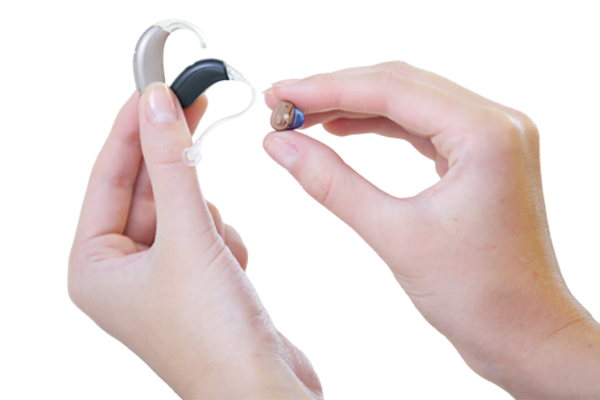
How Do Digital Hearing Aids Work?
Digital hearing aids use advanced technology to convert sound into digital signals, providing clearer and more precise audio compared to older analogue models. They offer a much-improved listening experience by reducing background noise and enhancing speech clarity.
Modern hearing aids often feature multiple microphones to focus on sounds coming from specific directions, providing a more distinct and crisper audio experience. Most recent models also offer additional features like Bluetooth connectivity, allowing you to stream audio directly from your phone or other devices.
Hearing aids work by amplifying and processing sounds to improve your hearing. Here’s a simple breakdown of the process:
Microphone
Captures sound from the environment.
Amplifier
Increases the volume of the processed sound.
Processor
Converts sound into digital signals to enhance clarity and reduce noise.
Speaker
Delivers the amplified sound into your ear.
What Types of Hearing Aids Are There?
There are six main types of hearing aids: Behind-the-Ear (BTE), Receiver-In-Canal (RIC), Receiver-In-The-Ear (RITE), In-the-Ear (ITE), Completely-In-Canal (CIC), and Invisible-In-Canal (IIC). Each type offers different features and benefits, catering to various levels of hearing loss, comfort, and visibility preferences. Whatever your unique needs might be, rest assured there is a device to match them!
BTE (Behind-the-Ear) hearing aids sit behind the ear, connected to a tube that leads to a custom ear mould or dome placed inside the ear canal. These aids are typically larger than other styles, but modern designs are sleek and discreet. BTE models are suitable for all types of hearing loss, from mild to profound, and are available in a wide range of colours to match hair or skin tones, or to fit your personal sense of style.
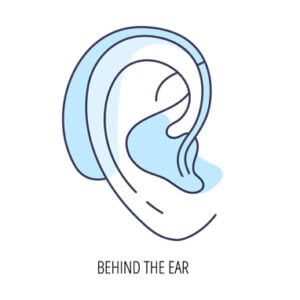
Standard BTE: Suitable for most levels of hearing loss, especially moderate to severe. These devices offer robust amplification and are often more durable.
Mini BTE: Smaller and more discreet, often used for mild to moderate hearing loss. Mini BTEs are less noticeable and provide a comfortable fit.
Power BTE:Designed for severe to profound hearing loss, providing higher amplification. These are the most powerful BTEs and are ideal for those with significant hearing loss.
Customisable Fit: BTE hearing aids come with domes or custom ear moulds that are tailored to fit your ear perfectly, ensuring comfort and effectiveness
Variety of Colours: Available in multiple colours to match your preference
Sleek Designs: Modern models feature elegant, stylish designs.
Directional Microphones: Help improve hearing in noisy environments by focusing on the sounds you want to hear.
Bluetooth Connectivity: Allows for wireless streaming from smartphones and other devices.
Rechargeable Batteries: Available in many models, eliminating the need for disposable batteries.
Noise Reduction: Minimises background noise for a clearer hearing experience.
Telecoil: Enhances hearing during phone calls and when using loop systems in public spaces.
Amplification: BTE hearing aids provide high power, especially the power BTE models, which can assist users with severe hearing loss.
Advanced Sound Processing: Features like noise reduction and feedback cancellation improve sound clarity and listening comfort.
Seamless Connectivity: They effortlessly connect to various devices, allowing you to stream audio directly to your aids.
Extended Battery Power: Due to their size, they are able to accommodate larger batteries and extended usage on a single charge.
High Power: Suitable for severe to profound hearing loss, providing the necessary amplification.
Durability: Larger size can accommodate more robust components, making them more durable.
Features: Often include advanced features like directional microphones, telecoils, and Bluetooth connectivity.
Comfort: Less occlusion effect (blockage feeling) compared to in-the-ear models, offering a comfortable fit.
Size: Generally considered the least discreet type of hearing aid.
Maintenance: Require regular cleaning of the tubing and ear mould to ensure optimal performance and hygiene.
Who Should Consider BTE Hearing Aids?
BTE hearing aids are ideal for individuals with moderate to severe hearing loss who need stronger amplification and advanced features. They are also suitable for those who prioritise comfort and durability and are not overly concerned with the visibility of their hearing aids. However, many modern BTE models are designed to be sleek and stylish, far removed from the bulky, conspicuous devices of the past, making them an attractive option even for those concerned about aesthetics.
RIC (Receiver-In-Canal )/RITE (Receiver-In-The-Ear) hearing aids have a small case that sits behind the ear, while the receiver (speaker) is placed inside the ear canal, connected via a thin wire. The design provides a natural, open fit, which allows for more airflow and reduces the occlusion effect. They are highly discreet and comfortable, making them a popular choice for a wide range of hearing loss levels.
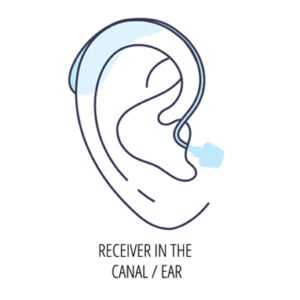
Standard RIC/RITE: Ideal for mild to severe hearing loss. These devices provide clear sound quality and are less prone to feedback.
Mini RIC/RITE: Smaller and more discreet, suitable for mild to moderate hearing loss. They offer a comfortable fit and are nearly invisible.
Power RIC/RITE: Provides higher amplification for severe hearing loss. These are suitable for individuals who need more sound amplification.
Discreet Design: The small case behind the ear and the thin wire make RIC/RITE hearing aids less visible than BTE models.
Open Fit: The open-fit style allows natural sound to enter the ear canal, reducing the occlusion effect and providing a more natural listening experience.
Directional Microphones: Help focus on sounds from specific directions, improving hearing in noisy environments.
Bluetooth Connectivity: Many models feature Bluetooth for wireless streaming from smartphones and other devices.
Noise Reduction: Advanced noise reduction technology minimises background noise, making it easier to focus on conversations.
Customisable Settings: Many RITE hearing aids allow users to adjust the settings based on different environments.
Sound Quality: The separation of the microphone and receiver reduces feedback and delivers clearer sound.
Customisable Settings: Many RIC/RITE aids come with customisable programmes that can be adjusted for different listening environments.
No Occlusion: Since the entrance to your ear canal is left partially open, this prevents that awkward feeling of hearing your voice too loudly, or as if your ear is blocked.
Reduced Feedback: The separation or the microphone and receiver results in lower levels of feedback compared to other hearing aid models.
Discreetness: Smaller and less visible than BTE hearing aids, offering a more cosmetically appealing option.
Comfort: The open-fit design is comfortable and reduces the occlusion effect, making it feel more natural.
Flexibility: Suitable for a wide range of hearing losses, from mild to severe, making them versatile.
Rechargeable Options: Rechargeable models are available, providing convenience and eliminating the need for regular battery changes.
Durability: The receiver in the canal is more prone to moisture and wax damage, which can affect performance.
Maintenance: Requires regular cleaning and occasional replacement of the receiver to maintain optimal performance.
Battery Life: Smaller size may result in shorter battery life compared to BTE models, especially for non-rechargeable versions.
Who Should Consider RITE Hearing Aids?
RITE hearing aids are perfect for people with mild to severe hearing loss who prioritise discreetness, comfort, and natural sound. They are also ideal for those who want features like Bluetooth connectivity and noise reduction.
ITE (In-The-Ear) hearing aids are custom-made to fit the outer portion of the ear. They are available in two primary sizes: full shell and half shell. Full shell ITE hearing aids fill the entire outer ear, providing more power for those with moderate to severe hearing loss. Half shell models are smaller and cover the lower portion of the outer ear, making them more discreet while still offering enough power for mild to moderate hearing loss.
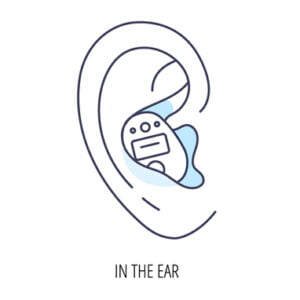
Full Shell ITE: Fills the entire outer ear and is best suited for moderate to severe hearing loss.
Half Shell ITE: Fills only the lower part of the outer ear and is best for mild to moderate hearing loss.
Custom Fit: ITE hearing aids are moulded to fit the unique shape of your ear, providing maximum comfort and effectiveness.
Range of Sizes: Available in Full Shell or Half Shell to suit different levels of hearing loss as well as preferences for visibility or dexterity.
Ease of Use: Larger ITE models are easier to handle, making them a good option for individuals with limited dexterity.
Advanced Sound Processing: Includes features like feedback cancellation, noise reduction, and directional microphones to enhance sound clarity.
Bluetooth-Enabled: Many ITE hearing aids offer Bluetooth connectivity, allowing for wireless streaming from smartphones and other devices.
Telecoil: Enhances hearing during phone calls and when using loop systems in public places.
Natural Sound Quality: Positioned inside the ear, ITE hearing aids provide a more natural sound experience.
Reduced Wind Noise: Due to their placement, ITE hearing aids are less likely to pick up wind noise compared to behind-the-ear models.
Powerful Amplification: Larger than other models of in-ear hearing aids, ITE models are able to accommodate powerful amplifiers, making them suitable for users with severe hearing loss.
Discreet Options: ITE hearing aids, especially smaller options such as half-shell models, are almost invisible, offering a good balance between power and discretion.
Comfortable with Glasses: ITE hearing aids sit entirely in the ear, making them a great option for individuals who wear glasses as they don’t interfere with the frames.
Convenient: Easy to insert and remove, especially for those with dexterity challenges.
Advanced Features: Despite their compact size, many ITE aids come equipped with wireless streaming, directional microphones, and noise reduction.
Limited Rechargeable Options: Rechargeable options are less common with ITE hearing aid models.
Not Suitable for All Ear Shapes: Some individuals with particularly small or irregularly shaped ear canals may not be able to wear certain ITE models comfortably.
Durability: More prone to moisture and earwax damage due to their placement inside the ear canal.
Who Should Consider ITE Hearing Aids?
ITE hearing aids are great for people with mild to moderate hearing loss who prioritise comfort and customisation. They are also suitable for those who want a hearing aid that’s easy to handle and offers wireless streaming options.
Additional Considerations
- Dexterity Needs: Larger ITE models are easier to handle, making them a good choice for individuals with limited dexterity.
- Visibility Preferences: ITE hearing aids offer a range of options from nearly invisible (IIC) to more visible but still discreet (Full Shell), allowing users to choose based on their preference for visibility.
- Active Lifestyles: While smaller and more discreet, ITE hearing aids may require more frequent maintenance due to their exposure to moisture and earwax, especially for active individuals.
ITC (In-The-Canal) hearing aids sit partly in the ear canal and partly in the outer ear, offering a balance between power and discretion. They are suitable for mild to moderate hearing loss and provide a comfortable, custom fit.
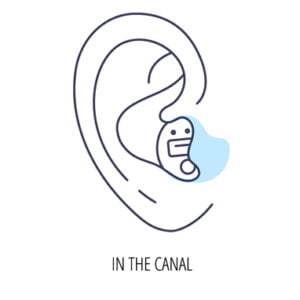
Custom Made: Moulded to fit partially in the ear canal and outer ear, ensuring a comfortable and snug fit.
Discreet Appearance: Smaller than ITE models, offering a more subtle look.
Easy to Handle: Larger than CIC and IIC, making it easier to insert and remove for users with dexterity challenges.
Directional Microphones: Available in some models to help focus on specific sounds, improving hearing in noisy environments.
Bluetooth Connectivity: Many ITC models now offer Bluetooth for wireless streaming from smartphones and other devices.
Noise Reduction: Reduces background noise, making conversations and other important sounds clearer.
Telecoil: Enhances hearing during phone calls and when using loop systems in public spaces.
Balanced Amplification: Suitable for mild to moderate hearing loss, providing enough amplification for various listening environments.
Reduces Wind Noise: Positioned inside the ear, ITC hearing aids are less likely to pick up wind noise compared to larger models.
Rechargeable Options: While limited, some models offer rechargeable batteries, providing convenience and cost savings.
Discreet: Less visible than most models, providing a good mix of discretion and power.
Comfortable: Custom moulded to fit snugly inside the ear canal and outer ear.
Easy Handling: Larger than CIC and IIC models, making them easier to handle and adjust, especially for those with dexterity challenges.
Advanced Features: Some models come equipped with Bluetooth, directional microphones, and noise reduction technology.
Limited Rechargeable Options: Most ITC models still rely on disposable batteries.
Not Suitable for Severe Hearing Loss: Due to power limitations, they may not be suitable for individuals with severe hearing loss.
Susceptible to Earwax: Being placed inside the ear canal, ITC models are more prone to earwax buildup, which may require regular cleaning.
Who Should Consider ITC Hearing Aids?
ITC hearing aids are suitable for individuals with mild to moderate hearing loss who seek a balance between power, comfort, and discretion. These aids are particularly suitable for those who need easy handling but still want a relatively discreet option. If you’re looking for advanced features like Bluetooth connectivity and directional microphones, but prefer something smaller than ITE aids, ITC hearing aids offer a great solution.
CIC (Completely-In-Canal) hearing aids fit entirely within the ear canal, making them barely visible. They are custom-made and typically used for mild to moderate hearing loss, providing a discreet and comfortable hearing solution.
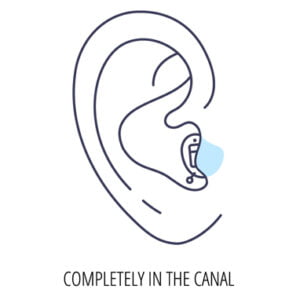
Invisible Look: Fits entirely inside the ear canal, making it almost invisible.
Custom Moulded: Made specifically for the shape of the user’s ear canal.
Smaller Size: Less noticeable than ITC or ITE hearing aids, ideal for those who prioritise discretion.
Noise reduction: Minimises background noise to provide a clearer listening experience.
Directional Microphones: Available in some models to help improve hearing in noisy settings.
Telecoil: Some CIC models include telecoil for enhanced hearing during phone calls or in public venues equipped with loop systems.
Discreet Design: CIC hearing aids are one of the most discreet types, offering a nearly invisible solution.
Moderate Power: Provides adequate amplification for mild to moderate hearing loss.
Wind Noise Reduction: Due to their placement deep in the ear canal, CIC hearing aids are less likely to pick up wind noise.
Custom Fit: The custom-moulded design ensures a comfortable and secure fit.
Highly Discreet: Almost invisible due to their deep placement in the ear canal.
Natural Sound: The placement inside the ear allows for a more natural sound experience.
Comfortable Fit: Custom-made to fit perfectly in the ear canal.
Minimal Wind Noise: Less prone to wind noise due to their in-canal positioning.
Dexterity Challenges: Small size can make them and their batteries difficult to handle for some users, especially when inserting or removing.
Limited Features: Because of their small size, CIC aids may not include features like Bluetooth or directional microphones.
Susceptibility to Earwax: More prone to earwax buildup, which may require frequent cleaning.
Who Should Consider CIC Hearing Aids?
CIC hearing aids are perfect for individuals with mild to moderate hearing loss who prioritise discretion and a natural sound experience. They are perfect for those who are looking for a nearly invisible hearing aid and are comfortable handling a smaller device.
IIC (Invisible-In-Canal) hearing aids are the smallest and most discreet type of hearing aid, sitting deep within the ear canal, making them virtually invisible. They are custom-made for each individual and are typically used for mild to moderate hearing loss.
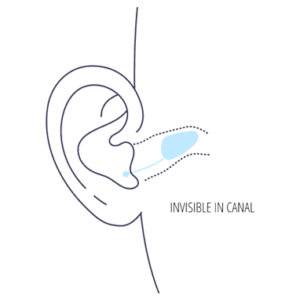
Completely Invisible: Placed deep inside the ear canal, making them nearly impossible to see.
Custom Fit: Tailored to the user’s unique ear canal shape for maximum comfort.
Smallest Size: The smallest hearing aid available, ideal for users prioritising discretion.
Noise Reduction: Reduces background noise, improving clarity in conversations and other important sounds.
Telecoil: Available in select models for enhanced phone call clarity and use in public loop systems.
Advanced Sound Processing: Features like feedback cancellation and noise reduction help to optimise sound quality.
Custom Comfort: Custom-moulded to the individual’s ear canal, ensuring a comfortable and secure fit.
Suitable for Mild to Moderate Hearing Loss: Best for individuals with less severe hearing loss.
Reduced Wind Noise: Their deep canal placement ensures minimal exposure to wind noise.
Natural Sound: The deep placement provides a more natural listening experience.
Most Discreet: The deepest placement in the ear canal, making them nearly invisible to others.
Suitable for Active Lifestyles: Due to their position, they don’t get in the way of your wearing headphones, glasses, helmets, or using your telephone.
Natural Sound Detection: As they sit deep in the ear canal, you are able to naturally detect the direction from which sounds are coming.
Limited Features: Due to their small size, IIC models may lack features such as Bluetooth.
Higher Levels of Maintenance Required: Due to their position in the ear canal, they are more susceptible to damage from moisture and earwax.
Unsuitable for Some Ear Shapes: If your ear canal is quite small or unusually shaped, IIC hearing aids may not be suitable for you.
Who Should Consider IIC Hearing Aids?
IIC hearing aids are the best choice for individuals with mild to moderate hearing loss who want the most discreet option available. They are ideal for those who prioritise invisibility and don’t mind compromising on features like Bluetooth. If you’re looking for a hearing aid that provides a natural sound experience while being virtually unnoticeable, IIC hearing aids are the perfect fit.
Special Focus: Phonak Lyric – The Extended Wear Invisible Hearing Aid
While most invisible hearing aids, like Invisible-In-The-Canal (IIC) models, are removed daily, the Phonak Lyric offers a unique advantage. The Lyric is designed for extended wear, allowing users to leave the device in their ear for several months at a time without needing to remove it for cleaning or battery changes. This makes it an ideal solution for those seeking the ultimate convenience and discretion.
How the Lyric Works:
The Lyric is placed deep within the ear canal by a professional and remains there continuously. It delivers clear, natural sound while being completely invisible to others.
Key Benefits:
- Extended Wear: No need to remove daily; wear continuously for months.
- Hassle-Free: No battery changes or daily maintenance required.
- Invisible: Positioned deep in the ear canal, making it virtually undetectable.
Learn more about the Phonak Lyric and see if this innovative hearing aid is right for you.


Our Range Of Hearing Aids
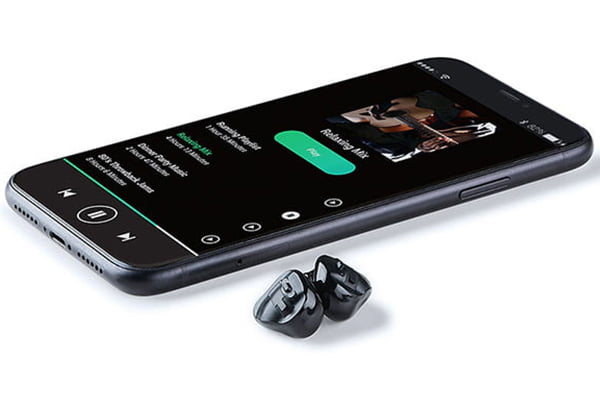
Bluetooth Hearing Aids
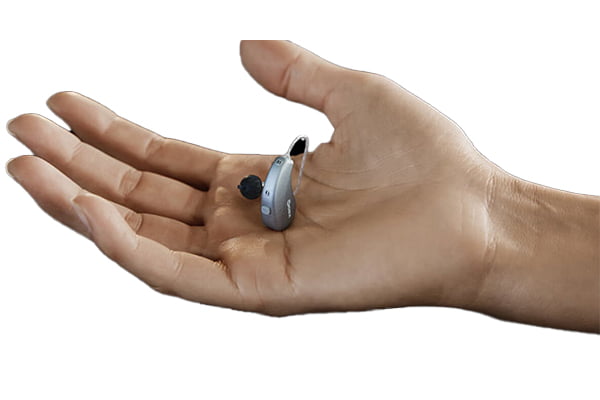
Interest Free Plans Available

Choosing Hearing Aids
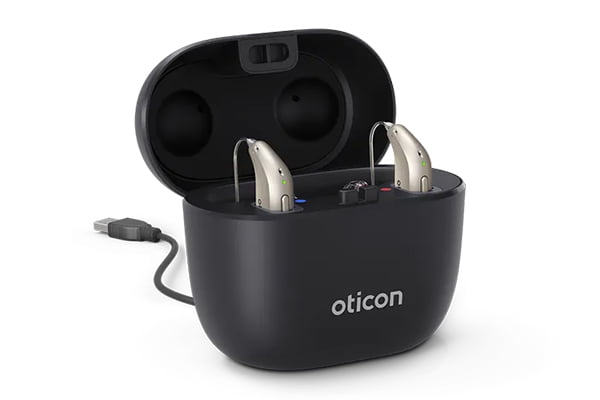
Rechargeable Hearing Aids

20% Off Purchase Only
Frequently Asked Questions
How long will it take to get my hearing aids?
The timeline depends on whether you choose custom or non-custom hearing aids:
- Custom hearing aids take up to 2 weeks, as they are specifically made to fit your ear perfectly.
- Non-custom hearing aids are usually available much quicker, but occasional delivery delays may mean it takes closer to 2 weeks.
What happens if my hearing aid isn’t right?
If you’re not getting along with your hearing aid as well as you’d hoped, don’t worry! We offer a 30-day trial period where you can come back to our clinic and try different models that might suit you and your unique needs better. Just keep in mind that this trial applies to hearing aids purchased from us, not from other providers like Specsavers, Boots, or Hearing Direct.
Will hearing aids fix my tinnitus?
Hearing aids can help reduce tinnitus by amplifying the sound around you, making the tinnitus less noticeable. While they can’t cure tinnitus, they can certainly help manage it. Tinnitus is often a symptom of another condition, and hearing aids can make a big difference.
What is the longest guarantee I can get for my hearing aids?
Every hearing aid we sell comes with a minimum 2-year guarantee, so if something goes wrong, we’ll send it to the manufacturer for repairs at no cost to you. If you’d like extra peace of mind, you can opt for a care package that extends your guarantee for up to 5 years!
What happens if I lose my hearing aid?
We always suggest getting insurance to cover any accidental damage or loss, since those aren’t covered under the guarantee. If your hearing aid is lost, unfortunately, we won’t be able to replace it for free – but your insurance can help with the cost of a replacement.
Are NHS hearing aids as good as privately bought ones?
While NHS hearing aids can be a good option for some, they don’t offer the advanced functionality or the product quality of privately bought ones. Privately purchased hearing aids can include features like AI, directional microphones, background noise reduction, Bluetooth connectivity, and much more. Most importantly, advanced hearing aids are often better equipped to handle more complex hearing loss, offering more tailored and effective solutions.
What is the average cost of a good set of hearing aids?
A high-quality set of hearing aids typically costs anywhere from around £2,000 to £3,300 for a pair. The exact price depends on the brand, features, and the specific needs of the individual.










